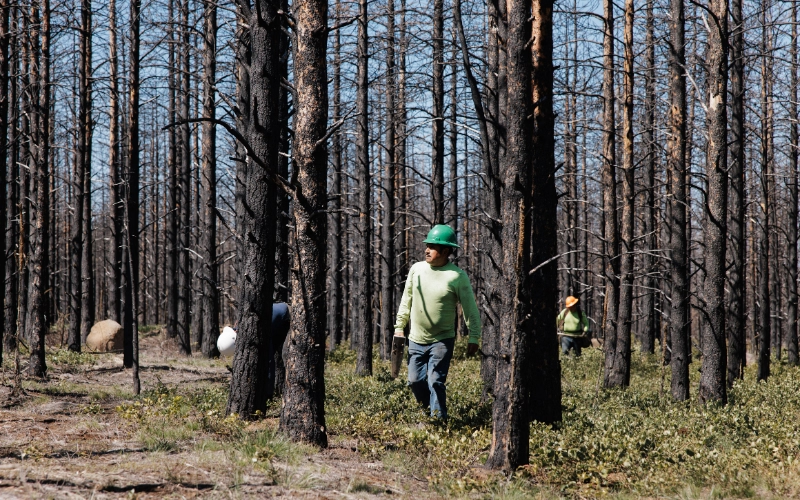Shaping the Future of American Forests

July 30, 2025

This July marked our first time attending the American Forest Congress, and we came eager to listen, learn, and connect. With so much momentum building around nature-based solutions in the U.S., we were excited for the chance to meet fellow changemakers, explore new opportunities for investment and restoration, and to hear directly from experienced voices in the field. From conversations over coffee, to sessions that tackled everything from wildfire risk to forest market dynamics, the experience offered fresh perspectives and sparked meaningful dialogue about the future of American forests and the role veritree can play in accelerating restoration.
A consistent theme across the Congress was the critical role of strong, stable markets in sustaining forest health, particularly on private lands. While raw materials are abundant, weak demand for wood products is undermining sustainable forest management. Strong demand for wood products, biochar, and carbon credits actually supports reforestation and long-term stewardship by sending clear market signals that justify investment in forest renewal. As a result, timberland investors and landowners are increasingly turning to carbon markets and other natural capital financing models as more stable, long-term alternatives to traditional timber harvesting.
Wildfires, especially in the western U.S., were recognized as a growing ecological and economic crisis. Experts advocated for proactive forest management strategies like thinning, prescribed burns, and fuel reduction to mitigate risk. However, the lack of market demand for the byproducts of these activities makes implementation challenging. While public support for prescribed burns is improving, lingering misinformation and safety concerns continue to hinder progress. Without new economic incentives, particularly for non-timber outputs, forest managers face an uphill battle in building resilience.

The forest sector continues to face a major perception problem. Words like “cutting” evoke environmental harm, while “thinning” with an ecological focus often better reflects actual practices. There is a need for more effective storytelling that resonates with the public, emphasizes the ecological value of working forests, and conveys the importance of sustainable wood products. Youth engagement is particularly lacking, and the industry risks stagnation if it can’t attract a new generation of forest stewards. Expanding the narrative to include underrepresented voices and community stakeholders is a necessary step toward broader credibility and support.
The U.S. Forest Service shared a renewed focus on multi-use forests, long-term sustainability, and rebuilding lost capacity in the forest products sector, highlighting the closure of over 100 panel plants in the past five years. Meanwhile, financial players like TIMOs (Timber Investment Management Organizations) and insurance companies are expanding their forest investments, drawn by the stable returns and climate risk mitigation benefits. Notably, decision-making among landowners is shifting toward highest-and-best-use frameworks, often prioritizing carbon sequestration projects over harvest. Policymakers showed bipartisan interest in institutional innovation, including the idea of a dedicated national fire service, reflecting the growing urgency around wildfire and forest resilience.
A clear theme across the Congress was the growing need, and opportunity, to rethink how we fund and sustain forest restoration. With traditional timber markets no longer providing reliable returns, landowners and forest managers are exploring new revenue models rooted in resilience: carbon credits, ecosystem services, and community-backed restoration efforts. What’s needed now is scalable, trusted infrastructure to bring these ideas to life, tools that ensure transparency, measure impact, and attract long-term investment.
That’s where we believe innovation can unlock real change. By supporting verified, tech-enabled reforestation, including post-wildfire recovery, organizations like veritree can help turn ecological restoration into investable outcomes. Together, we can build a future where nature-based solutions aren't just good for the planet, they're viable, trusted, and central to how we manage land for generations to come.
PREV BLOG